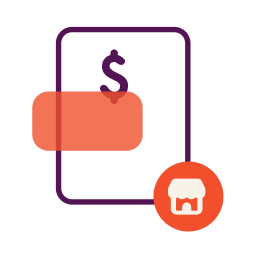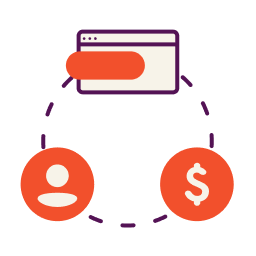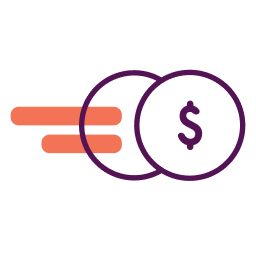It sounds like entrepreneurial nirvana: a business with high cash flow and low overhead. For some business owners, it’s reality.
There are more small business owners than you may realize who operate small businesses that make good money with very few fixed expenses. In fact, the large majority of small businesses in the U.S. have no employees (they’re called “nonemployer firms”), and another subset has just 1—4 employees, which may include a business owner and a spouse or other family member.
Some of these smaller businesses generate a lot of cash. Did you know, for example, that snow plowing businesses have been identified by IbisWorld as one of the top 10 highest profit margin businesses in the US? (Also interesting: credit bureaus and credit rating agencies are #10 on that list.)
Here, we’ll explore how a business with high cash flow and low overhead can benefit more than your bottom line. It can also benefit your business credit.
How To Understand Business Credit Fundamentals
If you’ve never heard of business credit, it may feel like a black box. What’s in there? What does it mean? How do you leverage it?
While you may feel at a disadvantage when it comes to credit—especially if your business is a startup or your personal credit is damaged—one important thing to keep in mind is that business credit ratings weren’t created to make it more difficult to get credit. Credit reports and credit scores were designed to make extending credit easier. They way it does that is by making it easier for lenders to analyze loan applications quickly and efficiently.
Good credit makes it easier for a lender to say “yes” to your application even if they don’t know a lot about you or your business.
The two two factors that make up most business credit scores include:
Payment history
Here a lender or credit scoring model evaluates how often the business pays bills on time. How does that payment history compare to other businesses in your industry? Besides on time payment history it will also look at whether the business credit history lists any other derogatory information such as collection accounts or tax liens.
Debt
Here the lender or credit scoring model evaluates the debt the business is carrying. It may compare that to other businesses in their industry or geographic area. (NAICS codes are often used for industry comparisons.) It may look at how much outstanding debt has, the payments, and/or credit utilization which compares balances to credit limits.
As you can see both of these factors can be helped by high cash flow and low expenses. That combination makes it easier to qualify for credit on the best terms, and to pay down debt quickly when interest rates are high.
Optimize Cash Flow for Better Credit: Easier Said Than Done, We Know
Cash flow refers to the movement of money in and out of your business. When inflows are greater than outflows your business has positive cash flow. In other words, it is a critical measure of your business’s financial health.
How do you optimize cash flow for better credit?
Ideally you’ll want to build a business that makes it easy to keep costs down while bringing in lots of revenue.
That doesn’t always work for all types of businesses, of course. A restaurant or bricks-and-mortar retail store isn’t likely to have low overhead unless perhaps the owner owns the building outright, serves food with inexpensive ingredients and has a lot of family members working in the business.
If you’re starting a business, you may want to consider a high cash flow business. In her book, Tiny Business, Big Money: Strategies for Creating a High-revenue Microbusiness, author Elaine Pofeldt identifies several industries that she says offer the “best revenue and profit potential to the average person”:
- E-commerce
- High-end professional and personal services businesses
- Manufacturing
- Wholesaling
- Financial services/technological services
- Transportation
- Construction and real estate
If you already have a business, you may want to look for product lines or services that can bring in more money without significant expenses. Not sure how to do this? Consider working with a business mentor from your local Small Business Development Center (SBDC) or SCORE. Both are SBA resource partners and offer a variety of free services to entrepreneurs.
Reduce Business Overhead Strategically
Making money is one side of the equation. How you spend it is the other. Review your business expenses with a fine-toothed comb and look for places where you can trim without sacrificing significant revenue. Note that sometimes it makes sense to cut a service or product line, or fire a client, to focus on more profitable activities.
Here are common business expenses and ways you may be able to reduce them for greater profitability:
Rent and Utilities
The cost of leasing office space, retail locations, or other facilities where your business operates can equate to very high overhead costs. And don’t forget about utilities such as electricity, water, gas, internet, and phone services.
Some businesses require office space, but not all do. Remote work means some “small businesses can operate with new efficiencies and less startup capital than in years past,” Pofeldt writes.
Even bricks and mortar retail businesses may want to consider an online store that, over time, may prove to be the more lucrative business model.
Payroll
This is often a major cost for small businesses, and includes payments made to employees for their work, including regular wages, overtime, bonuses, and commissions. It also includes costs for employee benefits such as health insurance, retirement plans, and paid time off.
Can your business hire agencies or independent contractors for certain types of work? If so, that may be worth exploring. Be careful though: new Department of Labor rules make it easier for workers to be classified as employees rather than contractors.
Supplies and Equipment
Here you’ll examine your spending on everyday items like paper, pens, printer ink, and other necessary supplies. You’ll also need to evaluate your spending on larger items such as computers, machinery, furniture, and tools required for the business.
In the office supplies category, using net-30 vendors for some or all of those purchases may help cash flow. And equipment leasing can make the cost of new equipment more affordable, and may even offer tax benefits.
Inventory
If your business needs inventory, including raw materials, you probably have felt the pinch of inflation. Inventory management is a science, and many tech tools have cropped up to help businesses manage inventory more efficiently and save money.
Marketing and Advertising
Expenses related to promoting your business, such as online ads, print ads, and sponsorships can take as much as 10—25% of your small business budget, depending on your industry and how heavily you market. You may also spend a significant amount of money developing and distributing marketing materials like brochures, business cards, or digital content.
Insurance
You certainly don’t want to leave your business uninsured or underinsured. Having the right amount of protection against claims of injury or property damage and coverage for legal costs associated with professional mistakes or negligence is crucial. But if you haven’t shopped for insurance lately, you may be paying too much.
Taxes and Licenses
Your business likely has to pay a variety of taxes, including income tax, payroll tax, and sales tax. Taking advantage of tax deductions and making strategic decisions like considering the advantages of being taxed as an LLC vs a sole proprietorship may save a lot of money.
Professional Services
This broad but essential expense category can include legal fees, accounting fees, financial planning and more. Again, you want to be smart here and not skimp too much. Money spent on solid contracts and compliance can be money well spent.
Similarly, keeping your bookkeeping up to date, and making sure you comply with IRS and state tax filing requirements isn’t optional. Still, good accounting software may help you trim this expense or give you more time to focus on your business.
Technology
If you’re paying recurring expenses for purchasing or subscribing to software needed for business operations, such as accounting software, CRM systems, and project management tools you may be paying for services your business has outgrown. Or you may be able to find a better deal by switching to a less expensive option.
An annual review of the costs associated with building and maintaining a website, including domain registration, hosting, and web design services, may help you identify areas for improvement.
Travel and Entertainment
Costs for business travel, including transportation, accommodation, and meals, as well as expenses for business lunches, dinners, or other activities aimed at building relationships, can add up quickly. (And the tax deductions aren’t as lucrative as in the past.) Can you trim those expenses by attending events more strategically, or by forgoing unnecessary entertainment?
Miscellaneous Expenses
As you review expenses, remember that even small expenses can add up over time. Always look at the annual cost and long-term cost of an expense, and not just the one-time fee.
Interest and Bank Fees
Are you paying unnecessary bank fees? There are lots of free business checking accounts, and some pay interest. If you’re paying a lot of ATM fees, consider a bank that offers an extensive network of free ATMs, or one that reimburses ATM fees.
Establish Business Credit Lines
Your business will experience unexpected expenses; it’s almost inevitable. Having enough money to weather cash flow shortages can mean the difference between failure and success.
That’s one reason why business lines of credit are one of the most popular types of small business loans. They can provide the working capital that a business needs. A line of credit is one of the most popular types of small business financing. Once approved, the business can tap those funds for short-term financing when needed. Pay it back and borrow again.
If you are starting a new business, consider a small business credit card. Most offer a line of credit, and there are even business credit cards with 0% intro APR offers.
Business credit cards can also help your business establish business credit. Most card issuers report payment history to at least one of the major business credit bureaus. Paying on time can help you build your business credit scores.
Understand, though, that debt can make it harder for your business to generate positive cash flow. Your goal should be to use debt strategically. You want to bring in enough cash to pay your expenses—including debt—and continue to build up a cash surplus.
Business Cash Flow and Overhead and Your Financial Health
Startups as well as established businesses often struggle with cash flow problems. Getting a handle on where your finances stand is the first step.
“Most business owners think they just need more clients or to bring in more money (top line revenue) but only sometimes is that actually the case,” suggests Kelsa Dickey, money coach and CEO of Fiscal Fitness.”
“Other times, the business can have a pricing flaw and the business model isn’t sustainable with the way it’s designed. Sometimes it has spending, debt, or payroll issues. We need to confirm what’s really going on so we can make targeted changes. Otherwise, we risk spending months solving a problem that may not even exist.”
Cash flow management is one of the most important financial tasks you can focus on as you grow your business.
How cash flow affects financial health
Liquidity: Positive cash flow ensures your business has enough liquidity (money) to pay for daily expenses. Without adequate liquidity, your business may struggle to meet pay its bills.
Solvency: Consistent positive cash flow helps maintain solvency, meaning your business has enough resources to meet its long-term obligations. This is a sign of financial stability, showing that your business can sustain operations over time.
Operational Efficiency: Strong operating cash flow reflects efficient business operations, meaning your business generates sufficient revenue to cover its operating expenses and potentially reinvest in growth opportunities.
Investment and Growth: Healthy cash flow allows you to invest and reinvest in your business, whether that’s purchasing new equipment, expanding product lines, or entering new markets. It also enables you to take advantage of opportunities without having to rely too much on external financing.
How to manage cash flow
Here are some strategies you can use to manage cash flow in your business:
Monitor cash flow regularly: Use cash flow statements and cash flow forecasts to keep track of cash inflows and outflows. Regular monitoring helps you anticipate and manage potential shortfalls. Not sure how to do this? If you keep your bookkeeping up to date, your accounting software should be able to help you create financial statements. Or talk with your accountant.
Improve receivables: Accelerate the collection of your accounts receivables with prompt invoicing, clear payment terms and following up on overdue invoices.
Control expenses: As mentioned earlier, review and cut unnecessary expenses. Consider negotiating better terms with suppliers.
Build a cash reserve: A cash reserve to cover unexpected expenses or downturns in revenue, ensuring your business can remain operational during tough times.
How Nav Can Help
Nav helps you understand your options, build your credit and fund your business.
Connect to your accounts to view your financial health at a glance, and understand where your business stands today, what your options are, and how to move your business forward.
Check, monitor and manage your business credit in one dashboard. A free Nav account offers summary credit reports and grades from two business credit bureaus, and one personal credit report score and summary.
With Nav Prime™, you’ll get both personal and business credit scores* and Detailed Credit Reports from two leading business credit reporting agencies: Equifax® and Experian™, along with business credit scores Equifax® Business Delinquency Score® and Experian™ Intelliscore PlusSM V2.
Personal credit is also important to lenders, and with Nav Prime you’ll get personal credit scores and detailed reports from Experian™ and TransUnion®. Scores provided are the TransUnion® VantageScore® 3.0, and Experian™ VantageScore® 3.0.
Nav provides the most comprehensive view of business and personal credit of any service available, along with tools to help small business owners improve their financial health.
*Nav provides access to Experian™ Intelliscore PlusSM V2, Equifax® Business Delinquency Score®, TransUnion®VantageScore® 3.0, and Experian™ VantageScore® 3.0. VantageScore is a registered trademark of VantageScore, LLC.
This article was originally written on May 28, 2024.




Have at it! We'd love to hear from you and encourage a lively discussion among our users. Please help us keep our site clean and protect yourself. Refrain from posting overtly promotional content, and avoid disclosing personal information such as bank account or phone numbers.
Reviews Disclosure: The responses below are not provided or commissioned by the credit card, financing and service companies that appear on this site. Responses have not been reviewed, approved or otherwise endorsed by the credit card, financing and service companies and it is not their responsibility to ensure all posts and/or questions are answered.